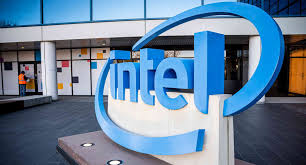Intel has won an epic battle with the European Union over a €1.06 billion ($1.1 billion) fine imposed in 2009, Bloomberg reports. In a final ruling, the EU Court of Justice overturned the original decision, ruling that regulators did not provide sufficient evidence that Intel had given illegal rebates to PC makers. Intel’s European misadventures are not quite over yet, as it is still battling a €376 million ($406 million) fine imposed by the Commission last year.
In 2009, the EU ruled that Intel illegally used hidden rebates to squeeze rivals out of the CPU market. It also found that Intel paid manufacturers to delay or completely stop launching products powered by AMD’s CPUs, calling those actions “naked sanctions.”
The legal process went back and forth for several years after that, but in 2017 Europe’s highest court ordered the fine to be re-examined because the EU had not conducted an economic assessment of how Intel’s actions affected rivals.
Europe’s second-highest court confirmed that the commission had conducted an incomplete analysis and overturned the €1.06 billion fine in 2022. At the time, it said the EU could not establish that Intel’s exemptions were “capable of having or were likely to have an anti-competitive effect because of the incomplete analysis”.
The commission appealed that decision, but the EU Court of Justice has now upheld it. Still, Intel never appealed the “naked sanctions” part of the previous ruling, so last year the commission imposed a new fine of €376 million on that basis. However, Intel is fighting that fine as well and has sued the EU to collect interest on the original, larger fine.
Of course, the processor landscape has changed drastically since the original 2009 ruling. At the time, Intel ruled PCs with an 81 percent CPU market share, compared to 12 percent for AMD. Today, Intel’s share has dropped to 63 percent and the company is struggling in the chip production arena next to rival TSMC, which makes the bulk of AMD and NVIDIA’s CPUs, GPUs, and AI processors.
Ironically, Intel has outsourced a large portion of its production to TSMC and other foundries, making up around 30 percent. Fortunately, despite its manufacturing problems, it appears to have excellent legal advice.
While the use of generative AI in games seems almost inevitable, as the medium has always toyed with new ways to make enemies and NPCs smarter and more realistic, watching one too many NVIDIA ACE demos after another really gave me stomach pains. It wasn’t just slightly smarter enemy AI – ACE can create entire conversations out of thin air, simulate voices and try to give NPCs a sense of personality.
It’s even doing this locally on your PC, powered by NVIDIA’s RTX GPUs. But while this might all sound great on paper, I didn’t like seeing an AI NPC in action almost every second.
TiGames’ ZooPunk is a great example of this: it relies on NVIDIA ACE to generate dialogue, a virtual voice and lip syncing for an NPC named Buck. But as you can see in the video above, Buck sounds like a weird robot with a slightly rustic accent. You can’t tell from the performance if he’s supposed to have some kind of relationship with the main character.
